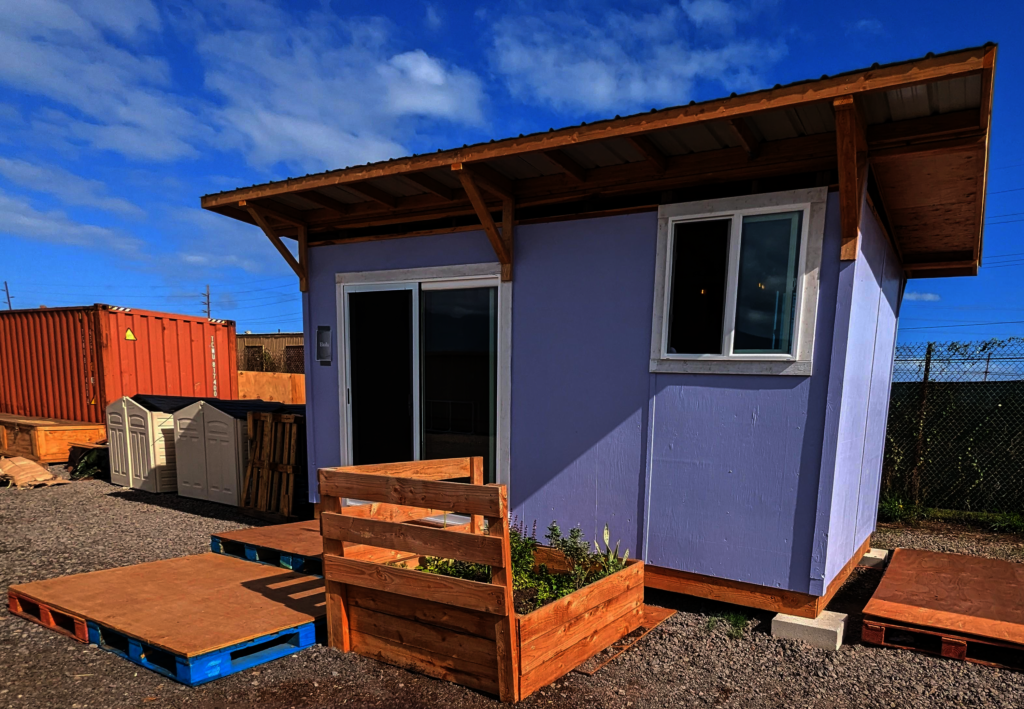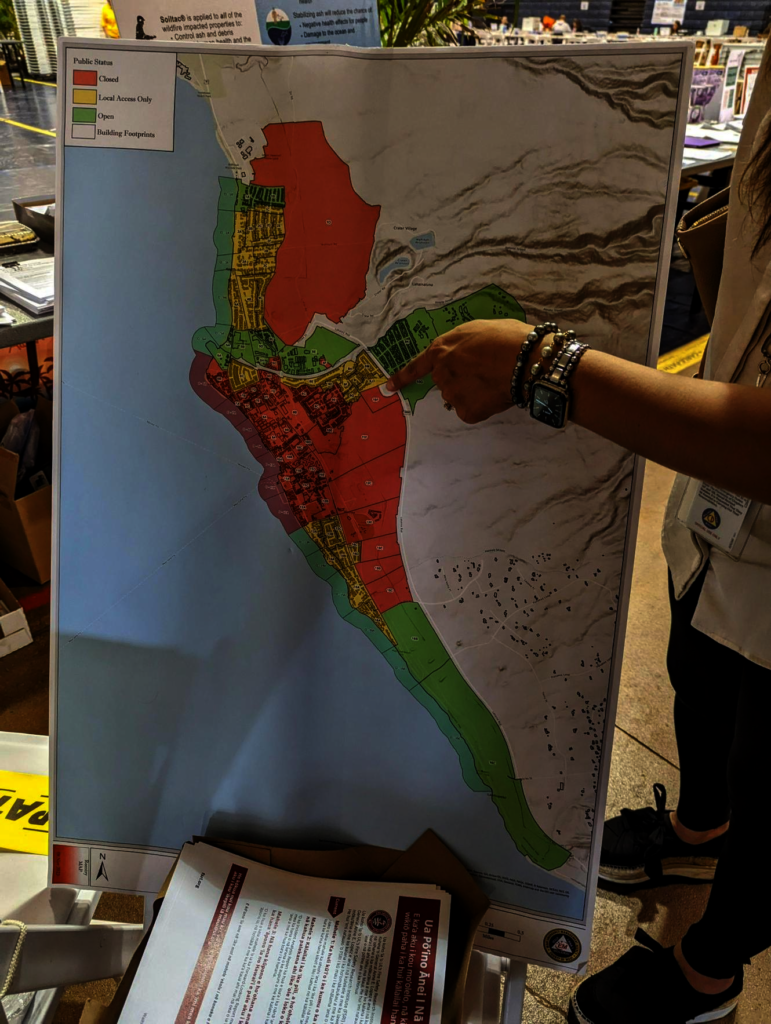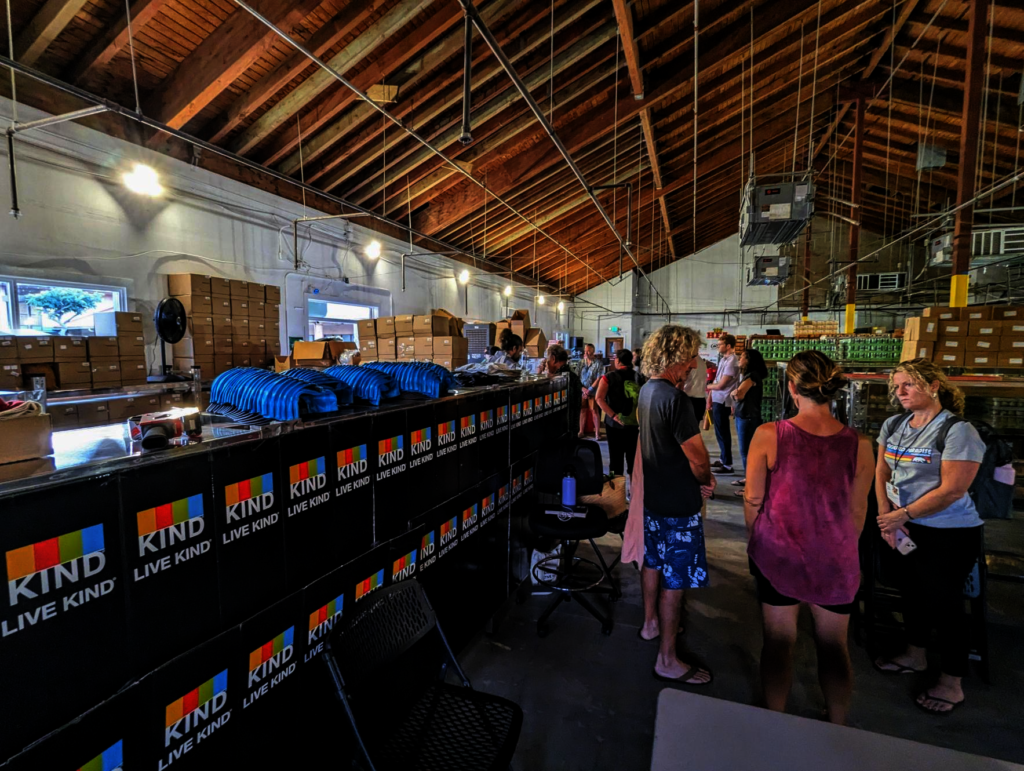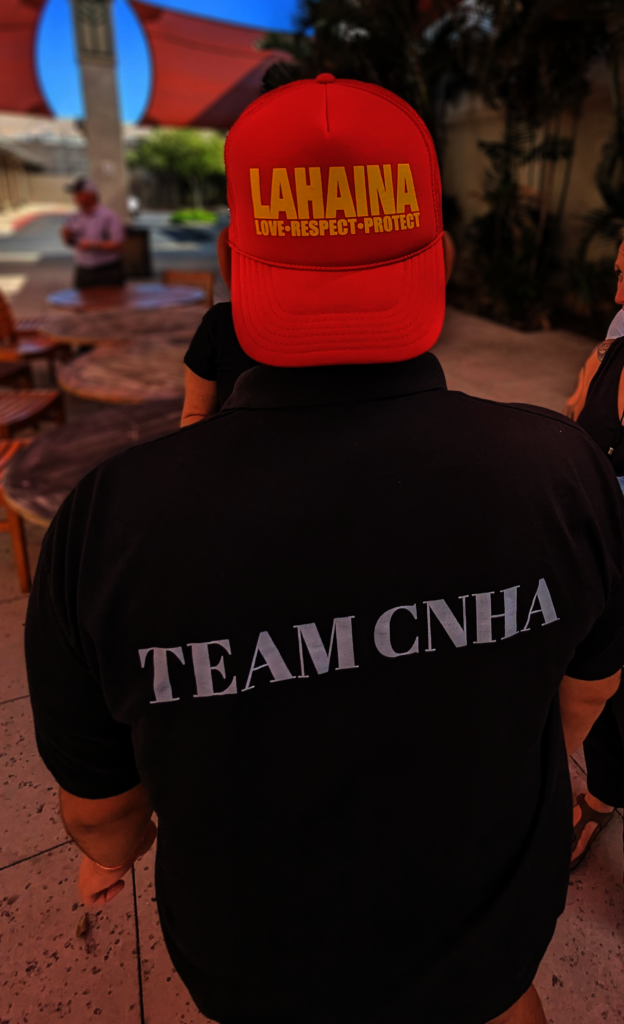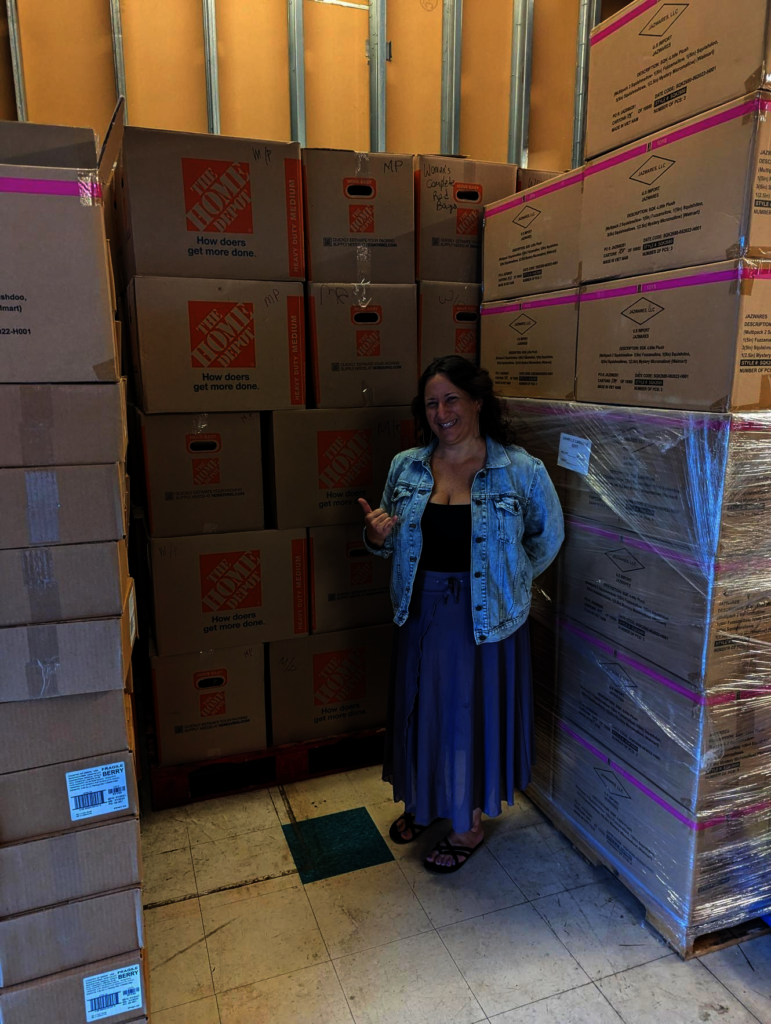Project Report
| Dec 14, 2023
Maui Fires - Recovery Update December 2023
![Tin Home housing option on Maui]()
Tin Home housing option on Maui
Maui Wildfires
-
The Maui Fire was a series of wildfires that burned parts of the island of Maui in the U.S. state of Hawaii in August 2023.
-
The fires began on August 8 and struck hardest the historic resort town of Lahaina, on Maui’s western peninsula, reducing most of the town to ash.
-
The death toll from the Lahaina wildfire rose to 100 with hundreds initially unaccounted for at first, now down to under 5 missing.
-
Approximately 2,700 homes have been destroyed and over 10,000 survivors displaced.
-
Challenges to recovery include toxic ash, limited survivor housing, infrastructure challenges, and high cost of supplies and shipping.
Good360 Response
Good360 worked with the International Safety Equipment Association (ISEA) to get thousands of Personal Protective Equipment (PPE) units to the island. More than $1 million worth of safety gear and PPE was pledged by ISEA corporate members to support recovery efforts. This included 250,000+ individual safety products such as N95 respirators, high-visibility vests, safety glasses, protective apparel, hand protection (industrial, vinyl & nitril), shoe coverings, general face coverings, ear plugs, first aid kits, cooling solutions, electrolyte replenishment drinks, and more. PPE was sent via airlift to Maui to ensure timely response.
As survivors leave temporary housing into more long-term solutions, they are lacking many household items that make a house a home. Good360 is working with Global Empowerment Mission and Maui Rapid Response to create Aloha Kits. These kits and related contents provide kitchen items, towels, cookware, and other basics. They are being sorted and assembled with love at Moore Wright Group in Washington State.
Warehousing will be a critical aspect of inkind donation distribution. Good360 is working with local nonprofit partners and officials to identify ideal space that can be shared by multiple nonprofits with space for boxes, pallets, truckloads and containers of donated products for long-term recovery. Funding from Coca-Cola, Bombas, American Eagle Outfitters and generous GlobalGiving individuals will keep us active in this long-term effort.
I was fortunate to be on a delegation to Maui this month and summarized my observations below.
Thank you for your support of our mission!
Sincerely,
Jim
Key Challenges (and updates)
- Housing
- Shelter Plan issues
- The American Red Cross followed and is following their standard disaster protocol.
- Non-Congregate housing for survivors created a logistical challenge for food and other basic products
- The congregate shelter population was moved to 30-day rentals. Every 30 days, individuals and families must pack up their belongings and move to a new location. The policy is meant to avoid “hangers-on” but is not appropriate in this long-term response phase. There have been 17 suicides, significant increases in mental health issues and substance abuse.
- Short Term Rentals
- Most short term rentals are owned by folks living on the mainland. It is a source of revenue and is very profitable.
- However, over 50% are empty during the year and could be used.
- Long Term Rentals
- Most long term rentals are owned by folks living on the mainland. It is a source of revenue and is very profitable.
- However, over 50% are empty during the year and could be used.
- Eco and Tiny Homes
- This is a potential solution for a small number of the displaced families. It will be difficult to create enough to be impactful but production is underway on island. Units can run from $15K (very tiny) to $100,000 for all the bells and whistle
- Ohana Village is almost ready to open
- Issues are permits around water and sewage that must be resolved before placing tiny or eco-homes on lots
- Lots are also expense and hard to come by. The current Ohana Village lot was donated by the Kingdom Ministry Church across the highway.
- Rebuilding Overall
- Toxic ash must be remediated, removed, and disposed of before any construction can begin
- Proof of land ownership does not appear to be as major an issue as thought (so far)
- Building back more resilient will cost between $3-5K more per dwelling
- Power lines (that caused the initial fire) should be buried underground in the rebuild but that will be expensive and take time
- Pre-event Homeless
- Before the fire, Maui was already dealing with a housing shortage
- Maui has the highest Cost/Income ratio in the country ?
- There were thousands of homeless in Lahaina before the fire – they need a new shelter or home (visited a Tent City just launched with large secure canvas tents and facilities for water, sewage, electric, and a garden for resident to help work
- Infrastructure
- Water
- Water is owned by commercial entities based on centuries old laws
- Laws make use of repurposed water challenging if not impossible
- De-salinization proved to be problematic for the community in CA
- Power lines underground
- The fire was caused initially by fallen utility poles and wires.
- There must be an aggressive effort to cover the costs to put them underground
- Roads
- The existing roads were largely destroyed by the fire within Lahaina
- Work trucks will further destroy them and any new roads
- That must be accounted for in planning
- UPDATE – Our team shared multiple government grant opportunities that could help cover much of the expense of the above improvements – BRIC,
- Communication
- The Governor, Mayor, County Council and other elected officials feel they are responding to the needs of the community – and for the most part they are
- However, survivors and local non-profits feel they are left out of the discussion, are not being heard, and are concerned that key decisions are being made in a bubble at a very critical juncture
- The concept of Zone or Block Captains as community liaisons was offered and is under consideration. It worked well in other fire communities to tighten up information and dispel rumors. Within the Hawaiian culture there are already pre-designated leaders in specific community areas, so this may be low hanging fruit
- UPDATE – days after meeting with us, the Mayor relaunched his town hall program – meeting in open forum with residents on all issues.
- Ash Removal
- Ash is extremely toxic due to the extreme heat of this fire melting glass, metal, and other nonporous building elements
- The ash contains the remains of the 100 who perished in the fire. It is on sacred ground and there is much concern about following Hawaiian processes for removal and burial
- There is a lot of it! Estimated 400,000 cubic yards.
- The first location picked was just rejected by both the receiving community and the Lahaina families, due mostly to the above
- Over 4,000 burned car shells had to be removed and moved off island. That leaves many survivors without transportation.
- UPDATE – an idea being discussed this week was to identify the homes of the perished, collect that ash, and keep it separate from the other ash. It could then be put in a tomb or other monument in Lahaina.
- Ash Remediation
- There are lots of theories and conjectures about how toxic the ash is, but everyone is concerned that the first long rain will carry the toxic ash into the sea killing fish and posing health issues for residents and tourists
- The County has sprayed all lots with a chemical substance that will hold the ash in place under most conditions.
- UPDATE – Good360 is working with two groups to get bioremediation products onto the island ASAP as a natural method of detoxifying the ash.
- Legacy of Colonialism and Plantations embedded in laws
- This came up most frequently as the primary enemy of progress and change. Laws around land and water usage are from the Plantation era and were created to ensure profitability of the sugar and pineapple plantations at the expense of the locals
- UPDATE – Our team member, Tennis Wick, made great progress with County Officials by sharing ways to circumvent existing laws and leverage others to gain momentum for others.
- Multi-agency Warehouse is needed
- Same old story – a multi-agency warehouse is needed so that Good360 and others can get pallets, truckloads, and containers of needed product on island and stored
- This will provide an opportunity for smaller nonprofits to pick up sorted items in smaller quantities more regularly
- UPDATE – Jim toured 5 facilities with Maui Rapid Response and their commercial agent. None was a perfect fit due to location, size, cost, and/or ability to manage. However, we are now working with the GEM team to pursue two options; sharing their existing space, taking over the space next door, or working with them to identify other options.
- Data and Data Sharing
- There is a shortage of consistent data and data sharing. This is leading to allegations of misuse of funds and ineffective policies
- The HUB cohort of nonprofits created a platform for matching survivor needs based on streamlined application and case management processes
- As in every disaster, survivors are challenged to complete multiple forms for potential funding, resulting in disappointment and PTSD from having to relive the disaster over and over again
- UPDATE – Sesie is working with the University of Hawaii to get the data from the Red Cross, FEMA, and Community Foundation of Hawaii. If they are able to get it, they will be able to better track survivor needs being met and not duplicated. There are potential applications for AI, so I will introduce Sesie to Phil Chow at Humanitas.
- Burnout
- This response phase has lasted far longer than most disasters, forcing nonprofit and government staff to work long hours and constant problem solving
- This takes a toll, and the delegation encouraged mandatory down time, massages for staff, and other measures to push life balance back to family priorities.
- The long term impact is potential PTSD and Post Traumatic Stress Growth if mental challenges are not identified and addressed.
- UPDATE – ideas included off-island counselors, tele-health, committing to 1:1 counseling for all survivors, Hummingly sessions for staff, special focus on students and kids immediately. Being aware that there are First Responders and Second Responders.
“When there is a problem, community is the answer.” Shared during morning session on 12/8. Overall, there is no better quote to summarize the trip to Maui, than this one. The community must and has to be engaged in the recovery process for it to be effective in the long term. There is discord within the community and that was shared and acknowledged throughout the trip. This is an issue that should be acknowledged and addressed as best possible; however, it is not something that can be remedied completely during recovery from a disaster. This is a systemic issue that dates back to colonialism and will take significant effort and focus to address.
However, the community can and should play a role in the disaster recovery from the Maui wildfires. There are significant hurdles for the recovery process: lack of affordable and available housing; missing infrastructure, such as water, utilities, and sewer, for the rebuild process; permitting challenges; resilient rebuilding efforts needed; multigenerational housing needs; economic revitalization for the local residents who lost many businesses as well as their homes; and many silos acting in the face of recovery with little to no coordination between groups.
There are also significant concerns voiced by the community members regarding the hazards present in the debris and what may arise as the debris is removed. What are the potential threats and risks? What are the decontamination recommendations for homes, businesses, and schools? What hazards exist at the schools while the debris is being removed and children present? Immediate and long-term risks should be addressed.
Mental health concerns of all citizens of all ages, including staff working the response and recovery process was a topic brought up in various groups throughout the week. It was noted there is a stigma to using traditional counseling services, as well as the barrier for cost, location, and transportation. One NGO found that activities that were low threat were effective in getting individuals to talk and open up about mental health and suicide. A mix uses of western and native or eastern practices may be the best blend of approach for mental health and wellness.
There was an existing homeless or unhoused population prior to the wildfire and that has been exacerbated by the event. Those on the financial cusp of unhoused or homeless are facing those realities now. Many community members shared experiences of loss of jobs/income as a result of the wildfire. It is also difficult to apply for disaster assistance and begin the recovery process while also working.
The cost of rent has nearly tripled as result of the wildfire. One family shared their pre-event rent was approximately $3500/month and now they found a home to rent but it costs approximately $9000/month. Also, several families shared that their monthly hotel costs paid by the Red Cross or FEMA are beyond $20,000- 25,000.
Overall disaster recovery language needs to be broken down into plan speak. For example, many citizens confused the CDBG annual program with the CDBG-DR program. In FEMA programs Individual Assistance doesn’t mean a lot to disaster survivors – possibly refer to it as household assistance. Explain what SBA is for homeowners. Reduce the back and forth with the paperwork for SBA, FEMA, etc.
The county needs a role similar to that of the State or FEMA Voluntary Agency Liaison (VAL). This position could go to the community meetings and the meetings at the local, state, and federal government and be that ear for the disconnect and help bridge the gap between the various groups.
There is a space and place for all, it is not just a one size fits all approach and what one group wants may not be best for others but find the way where possible to merge ideas and get to a ‘yes’. ![Map of Lahaina]()
Map of Lahaina
![GEM Warehouse on Maui]()
GEM Warehouse on Maui
![Local NPO on the island working with Good360]()
Local NPO on the island working with Good360
![Maui Rapid Response with Good360 donations on Maui]()
Maui Rapid Response with Good360 donations on Maui
Links:
![Share on Twitter]()
![Share on Facebook]()
